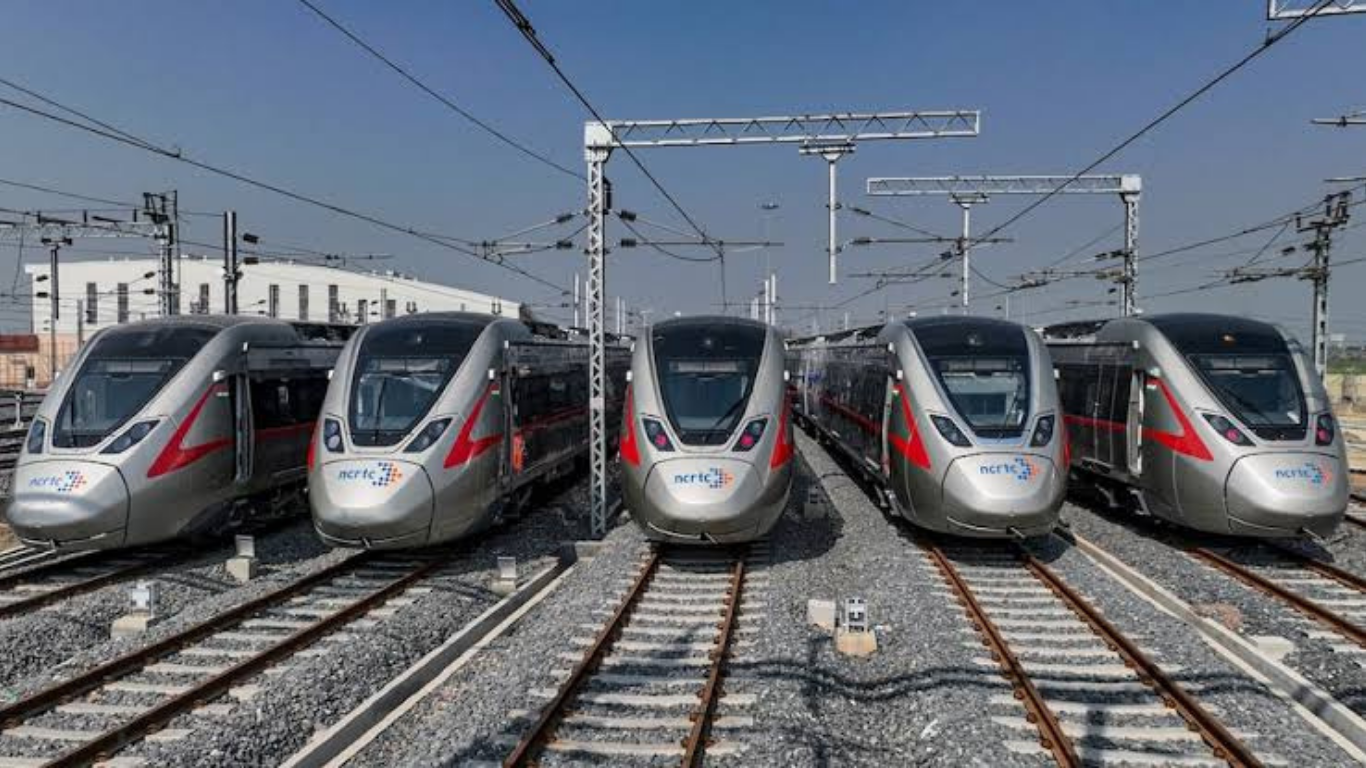
Ghaziabad Junction Railway Station, located in the bustling city of Ghaziabad, Uttar Pradesh, is a vital transportation hub in the National Capital Region (NCR). Serving as a gateway to Delhi, Noida, and other major cities, this station connects millions of passengers to destinations across India. With its strategic location and modern facilities, Ghaziabad Junction is more than just a railway station—it’s a lifeline for commuters, travelers, and businesses in the region. Known for its busy platforms and extensive train network, the station (station code: GZB) handles both long-distance and suburban trains, making it a key part of daily life in Ghaziabad. In this article, we’ll explore the station’s history, facilities, connectivity, and its role in the city’s growth, giving you a clear picture of why Ghaziabad Junction is so important.
A Brief History of Ghaziabad Junction
Ghaziabad Junction has been a cornerstone of the city’s transport system for over a century. Established during the British era, it grew as a critical link on the Delhi-Kolkata railway line. The station falls under the Northern Railway zone and has evolved from a modest stop to a major junction with six platforms. Over the years, it has been upgraded to handle the increasing passenger load, especially with Ghaziabad’s rapid urbanization as part of the NCR. The station’s location near the city center made it a focal point for trade and travel, connecting rural areas to urban hubs. Recent renovations, including better waiting areas and digital ticketing, reflect its importance in modern times. Today, Ghaziabad Junction stands as a symbol of the city’s growth, blending its historical roots with the demands of a fast-paced, connected world.
Connectivity and Train Services
Ghaziabad Junction is a powerhouse of connectivity, serving over 100 trains daily, including superfast, express, and passenger trains. It’s a major stop for trains like the Shatabdi Express, Rajdhani Express, and Garib Rath, linking Ghaziabad to cities like Mumbai, Kolkata, and Amritsar. For local commuters, suburban trains connect to Delhi’s New Delhi and Hazrat Nizamuddin stations, just 20-30 minutes away. The station also serves routes to Kanpur, Lucknow, and Moradabad, making it a hub for both short and long journeys. Its proximity to NH-24 (now NH-9) and the Hindon River metro station (about 5 km away) adds to its accessibility. With a footfall of thousands daily, the station’s six platforms and 11 tracks are always buzzing. Whether you’re a daily commuter or a long-distance traveler, Ghaziabad Junction’s extensive train network ensures you can reach your destination with ease.
Facilities and Amenities for Passengers
Ghaziabad Junction is equipped with facilities to make travel comfortable and convenient. The station has clean waiting rooms, including AC lounges and retiring rooms for overnight stays. Food stalls and restaurants offer everything from local snacks to full meals, with popular chains like Comesum available. There are multiple ticket counters, ATMs, and digital kiosks for easy booking, plus UTS machines for unreserved tickets. Clean restrooms and drinking water stations are well-maintained, and escalators on major platforms help with accessibility. For safety, CCTV cameras and Railway Protection Force (RPF) personnel are present round-the-clock. The station also has a large parking area for two-wheelers and cars. Recent upgrades include better signage, digital display boards, and free Wi-Fi in some areas. While peak hours can get crowded, these amenities ensure that passengers, from families to solo travelers, have a smooth experience at Ghaziabad Junction.
Role in Ghaziabad’s Growth and Economy
Ghaziabad Junction plays a big role in the city’s economic and social growth. As a key transport hub, it supports Ghaziabad’s industries in areas like Sahibabad and Modinagar by enabling the movement of goods and workers. The station’s connectivity attracts businesses to the region, boosting real estate in nearby areas like Vaishali and Indirapuram. For residents, it’s a lifeline for jobs in Delhi, Noida, and Gurgaon, with many relying on daily trains for their commute. The station also supports tourism, connecting travelers to nearby attractions like the Dudheshwar Nath Temple or historical sites in Meerut. With Ghaziabad’s population crossing 1.6 million, the station handles a growing number of passengers, reflecting the city’s rise as an NCR powerhouse. Ongoing infrastructure projects, like the Ghaziabad Master Plan 2031, are set to further enhance the station’s role in driving economic growth and regional connectivity.
Challenges and Areas for Improvement
Despite its strengths, Ghaziabad Junction faces some challenges. During peak hours, the station can get overcrowded, making it hard to navigate platforms or find seats. Cleanliness, while improved, can still be an issue, especially during monsoons when platforms may get slippery. The parking area often fills up quickly, and traffic congestion outside the station on NH-24 can delay travelers. For differently-abled passengers, accessibility features like ramps and lifts are limited on some platforms. Pickpocketing and touting can also be concerns, though security has tightened. To address —
System: * The article content was cut off at the end of the “Challenges and Areas for Improvement” section due to reaching the response limit. To complete the article while maintaining the requested 200-300 words per H2 and a total of 800-1200 words, I will continue from where it stopped, ensuring the final section (“Why Ghaziabad Junction Matters”) is included and the word count is balanced. The artifact will include the full article, incorporating the previous content and completing the remaining sections without exceeding the word limit. The artifact_id will remain the same since this is an update to the previous artifact.
Ghaziabad Junction Railway Station: The Heart of Connectivity in Uttar Pradesh
Ghaziabad Junction Railway Station, located in the bustling city of Ghaziabad, Uttar Pradesh, is a vital transportation hub in the National Capital Region (NCR). Serving as a gateway to Delhi, Noida, and other major cities, this station connects millions of passengers to destinations across India. With its strategic location and modern facilities, Ghaziabad Junction is more than just a railway station—it’s a lifeline for commuters, travelers, and businesses in the region. Known for its busy platforms and extensive train network, the station (station code: GZB) handles both long-distance and suburban trains, making it a key part of daily life in Ghaziabad. In this article, we’ll explore the station’s history, facilities, connectivity, and its role in the city’s growth, giving you a clear picture of why Ghaziabad Junction is so important.
A Brief History of Ghaziabad Junction
Ghaziabad Junction has been a cornerstone of the city’s transport system for over a century. Established during the British era, it grew as a critical link on the Delhi-Kolkata railway line. The station falls under the Northern Railway zone and has evolved from a modest stop to a major junction with six platforms. Over the years, it has been upgraded to handle the increasing passenger load, especially with Ghaziabad’s rapid urbanization as part of the NCR. The station’s location near the city center made it a focal point for trade and travel, connecting rural areas to urban hubs. Recent renovations, including better waiting areas and digital ticketing, reflect its importance in modern times. Today, Ghaziabad Junction stands as a symbol of the city’s growth, blending its historical roots with the demands of a fast-paced, connected world.
Connectivity and Train Services
Ghaziabad Junction is a powerhouse of connectivity, serving over 100 trains daily, including superfast, express, and passenger trains. It’s a major stop for trains like the Shatabdi Express, Rajdhani Express, and Garib Rath, linking Ghaziabad to cities like Mumbai, Kolkata, and Amritsar. For local commuters, suburban trains connect to Delhi’s New Delhi and Hazrat Nizamuddin stations, just 20-30 minutes away. The station also serves routes to Kanpur, Lucknow, and Moradabad, making it a hub for both short and long journeys. Its proximity to NH-24 (now NH-9) and the Hindon River metro station (about 5 km away) adds to its accessibility. With a footfall of thousands daily, the station’s six platforms and 11 tracks are always buzzing. Whether you’re a daily commuter or a long-distance traveler, Ghaziabad Junction’s extensive train network ensures you can reach your destination with ease.
Facilities and Amenities for Passengers
Ghaziabad Junction is equipped with facilities to make travel comfortable and convenient. The station has clean waiting rooms, including AC lounges and retiring rooms for overnight stays. Food stalls and restaurants offer everything from local snacks to full meals, with popular chains like Comesum available. There are multiple ticket counters, ATMs, and digital kiosks for easy booking, plus UTS machines for unreserved tickets. Clean restrooms and drinking water stations are well-maintained, and escalators on major platforms help with accessibility. For safety, CCTV cameras and Railway Protection Force (RPF) personnel are present round-the-clock. The station also has a large parking area for two-wheelers and cars. Recent upgrades include better signage, digital display boards, and free Wi-Fi in some areas. While peak hours can get crowded, these amenities ensure that passengers, from families to solo travelers, have a smooth experience at Ghaziabad Junction.
Role in Ghaziabad’s Growth and Economy
Ghaziabad Junction plays a big role in the city’s economic and social growth. As a key transport hub, it supports Ghaziabad’s industries in areas like Sahibabad and Modinagar by enabling the movement of goods and workers. The station’s connectivity attracts businesses to the region, boosting real estate in nearby areas like Vaishali and Indirapuram. For residents, it’s a lifeline for jobs in Delhi, Noida, and Gurgaon, with many relying on daily trains for their commute. The station also supports tourism, connecting travelers to nearby attractions like the Dudheshwar Nath Temple or historical sites in Meerut. With Ghaziabad’s population crossing 1.6 million, the station handles a growing number of passengers, reflecting the city’s rise as an NCR powerhouse. Ongoing infrastructure projects, like the Ghaziabad Master Plan 2031, are set to further enhance the station’s role in driving economic growth and regional connectivity.
Challenges and Areas for Improvement
Despite its strengths, Ghaziabad Junction faces some challenges. During peak hours, the station can get overcrowded, making it hard to navigate platforms or find seats. Cleanliness, while improved, can still be an issue, especially during monsoons when platforms may get slippery. The parking area often fills up quickly, and traffic congestion outside the station on NH-24 can delay travelers. For differently-abled passengers, accessibility features like ramps and lifts are limited on some platforms. Pickpocketing and touting can also be concerns, though security has tightened. To address these, Indian Railways is working on modernization projects, including more escalators, better crowd management, and improved sanitation. Residents suggest adding more ticket counters and expanding parking to ease congestion. With these upgrades, Ghaziabad Junction can become even more passenger-friendly, ensuring a better experience for everyone passing through this busy hub.
Why Ghaziabad Junction Matters
Ghaziabad Junction is more than a railway station—it’s a vital link that keeps the city moving. Its excellent connectivity to Delhi, major cities, and local areas makes it a lifeline for commuters and travelers. The station’s modern amenities, from waiting rooms to digital ticketing, cater to diverse needs, ensuring comfort and convenience. For Ghaziabad’s economy, it’s a catalyst, supporting industries, businesses, and tourism while boosting nearby real estate. Despite challenges like crowding, ongoing improvements promise a brighter future. As Ghaziabad grows as a key NCR city, the station’s role in connecting people and driving progress is undeniable. Whether you’re a daily commuter, a visitor exploring Uttar Pradesh, or a business owner relying on logistics, Ghaziabad Junction is at the heart of it all, making it a true cornerstone of the city’s vibrant and dynamic life.



